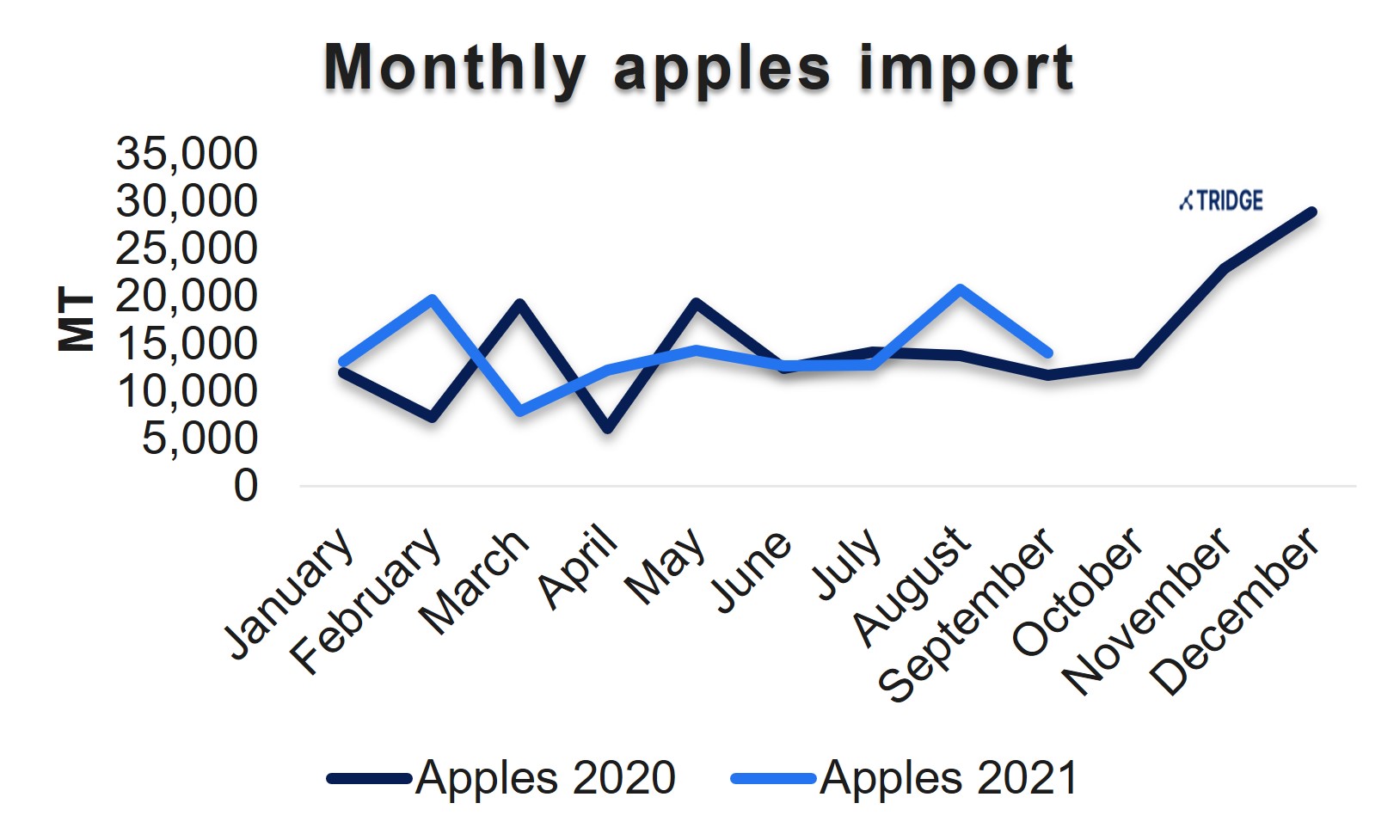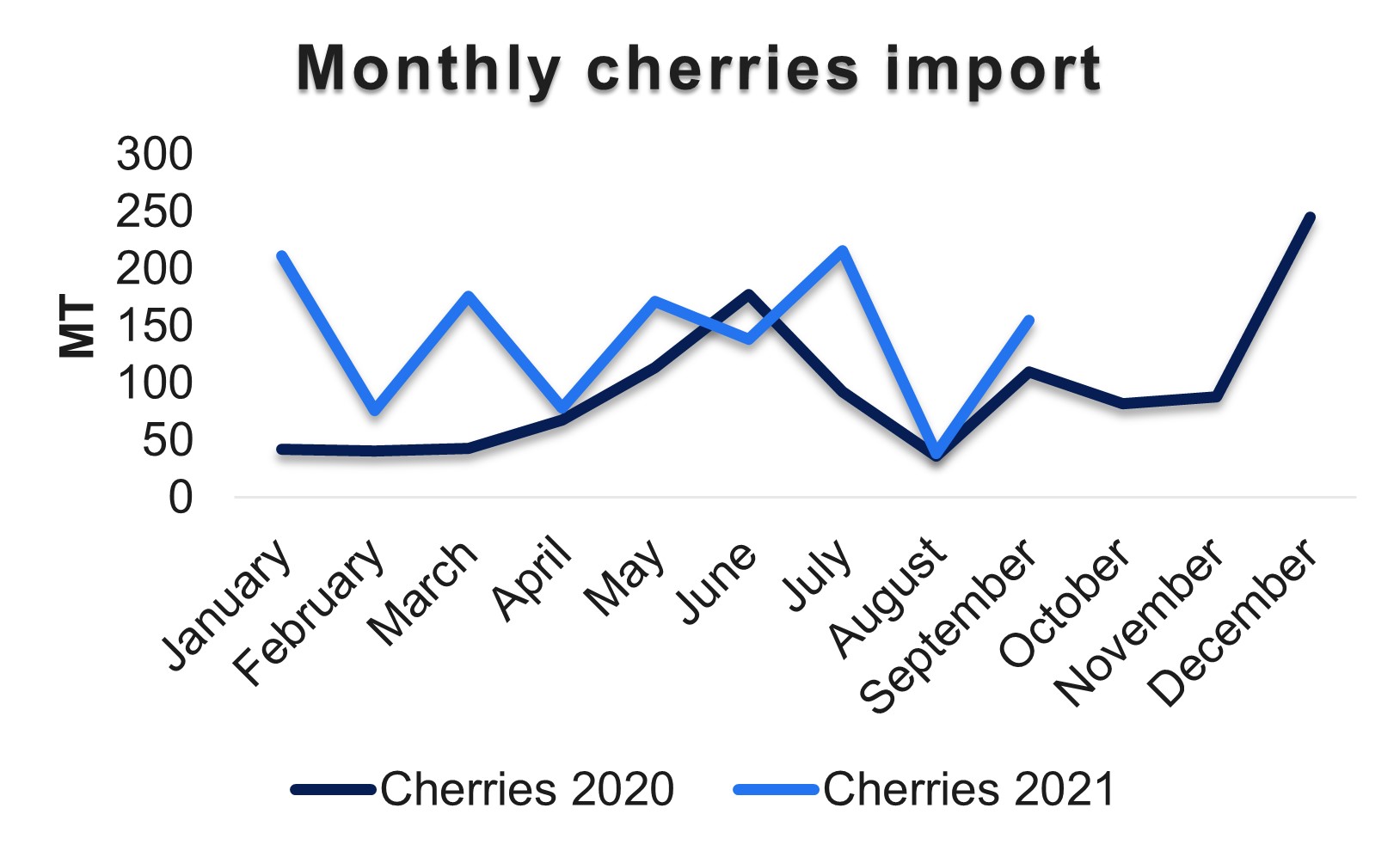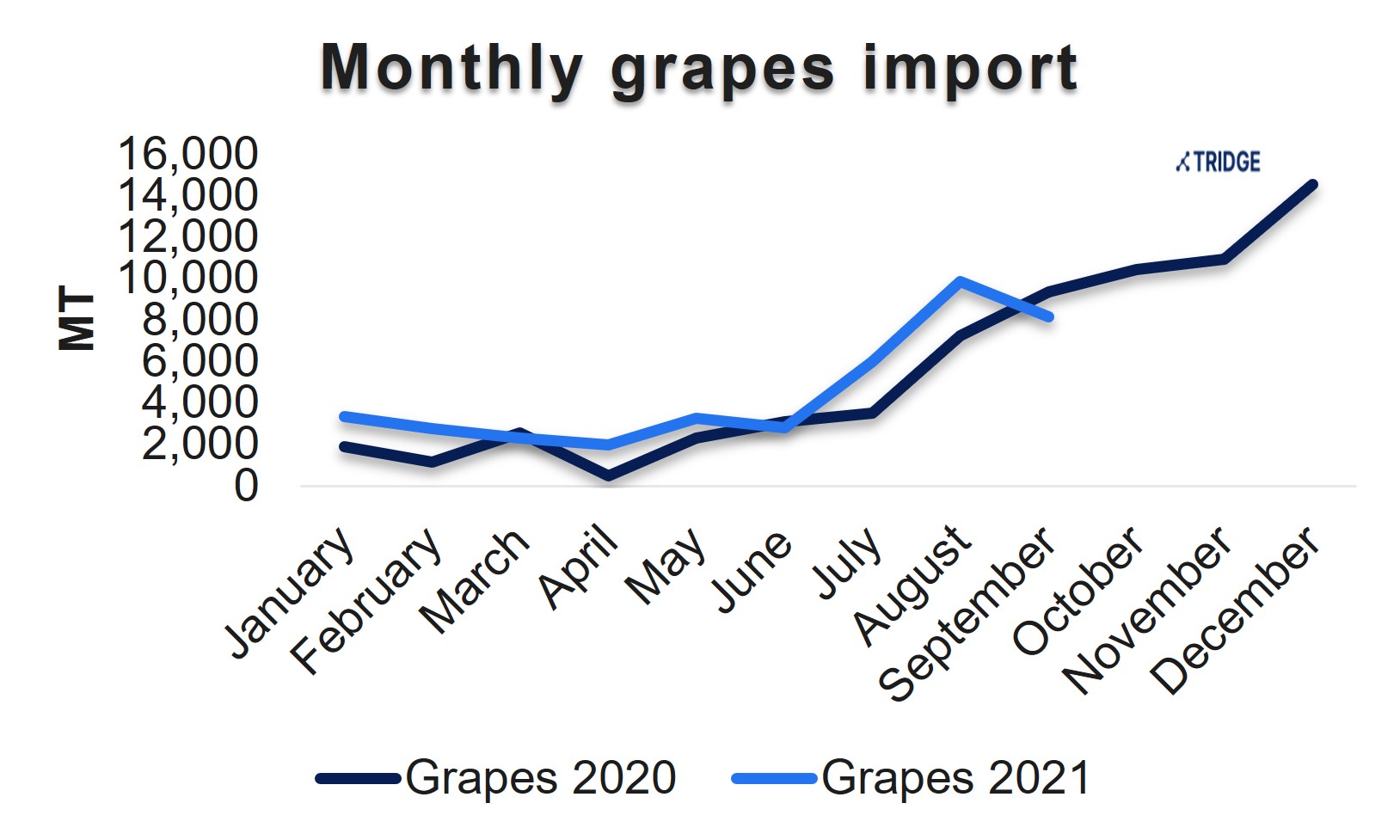The Philippines’ Fresh Fruit Import Increase Continue in 2021

Overview of the Philippines’ non-tropical fruit imports
The Philippines has experienced a surge in fruit imports since the onset of Covid in the spring of 2020. In 2020, fresh fruit imports grew 36% YoY to USD 695 millions with apples, oranges and grapes being among the most imported fruits. While the Philippines themselves are a major exporter of tropical fruits such as bananas, pineapple and coconut, there is great demand for imported fruits as it is price competitive and because consumers enjoy a wide variety of fruits.
In 2021, USDA projects that the Philippines’ fruit import will increase by a further 5% while import data from Philippines Statistics Authority reveal significant changes in import patterns across some of the most popular types of imported fruit.
According to Rovel Torres, one of Tridge’s engagement managers in the Philippines, the rise of fruit’s popularity is directly related to the restrictions brought about by Covid. In the Philippines, lockdowns with strict restrictions on movement, businesses operations and home-schooling of children have come and gone since March 2020. Lockdowns imposed in the battle against Covid have shifted demand from a wide array of foods consumed at restaurants, cafés and canteens towards healthier options such as fresh fruits consumed at home, Rovel Torres explains.
Lengthy and repeated lockdowns have also opened new sales channels for fresh fruit in the Philippines, where fruit stalls boasting imported fruits, along with domestically produced ones, on bicycles or sidecars are now a common sight. In addition, online delivery services have added fruits to their product catalogs allowing customers to purchase fruit swiftly and from the comfort of their home. Moreover, packages containing apples, grapes and oranges have grown to become a common type of “get well soon” gift.
Trends of popular imported fruits in the Philippines
Oranges
With the spread of Covid in the Philippines, vitamin C rich fruits such as oranges and mandarins have grown increasingly popular as they are believed to have positive effects in preventing and alleviating Covid severity. In Jan-Sep 2021, the import value of oranges was USD 15 million, up 0.29% YoY while import volume increased 7% from USD 12.2 million in 2020 to USD 13 million. In the first nine months of 2021, 44% of oranges imported to the Philippines originated from China, 29% from Australia and 17% from USA. Monthly import data suggests that arrivals have been a month delayed compared to 2020, as the relatively large quantities arrived in January, April and August all arrived a month earlier in 2020.

Data source: Philippine Statistics Authority
Apples
One of the most popular imported fruits in the Philippines, apples, have increased 17% YoY to USD 192 millions in import value and 10% in import quantity to during Jan-Sep 2021. Imports are almost exclusively from China, which holds a 98% market share of imported apples arriving in the Philippines and in 2020, 29% of imports were concentrated around November and December. Poor weather in the Red Fuji apple producing regions of Shanxi and Shandong in China during the fall of 2021 has increased the quantities of lower grade apples available on the market, which are the preferred type in most Southeast Asian countries. However, EXW prices of grade 1 & 2 red fuji apples have increased from USD 0.92 in Dec 2020 to USD 1.01 in Dec 2021, while the lower grade apples sold on the Chinese market have increased from USD 0.96/kg to USD 1.04/kg between 7 Nov 2021 and 7 Dec 2021. Hence, the Philippines’ apple import pattern in the remaining last quarter of 2021 can end up going both ways depending on the strength of consumer demand.

Data source: Philippine Statistics Authority
Cherries
Cherries are popular for use in cake and desserts during the Christmas holiday season in the Philippines and shipments are normally timed ahead of this. However, the data show that in 2021, shipments were delayed and arrived well into the spring - this information has been confirmed by Filipino wholesalers that Tridge have been in contact with. In January 2021 211 MT of cherries, a staggering 399% increase compared to the 42 MT import of January 2020 was recorded, whereas in March a 310% YoY increase took place. Overall, cherry imports for Jan-Sep 2021 was 1260 MT, representing a 74% YoY from 723 MT in 2020.

Data source: Philippine Statistics Authority
Grapes
The value of grape imports in Jan-Sep 2021 of USD 81 million represents a 28% increase YoY from USD 63 million in the same period of 2020. In 2021, China has gained further market share as they are accountable for 71% of imported volume in Jan-Sep 2021 compared to 65% in the first nine months of 2020. For the entire 2020, China held 75% market share and this may well be far exceeded in 2021, as China's only competitor during Oct-Dec 2020 was the USA. As ocean freight challenges continued, USA’s grape exports to the Philippines in 2021 have fallen by 65% from 2,625 MT in Jan-Sep 2020 to 920 MT in 2021. Increased freight rates have prompted importers in the Philippines to source closer to home and this may continue well into 2022.

Data source: Philippine Statistics Authority
Sources
USDA: Fresh Fruits Market Brief
Philippine Statistics Authority Database
Tridge Local Insight, Oct. 24 2021: China Fuji apple season
Tridge Local Insight, Oct. 14 2021:: Fuji apple starts harvesting in China
Jining Characteristic Agricultural Research Institute: Yantai Qixia Apple Price


